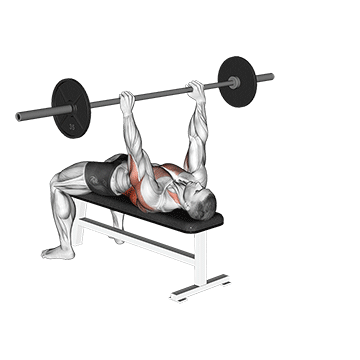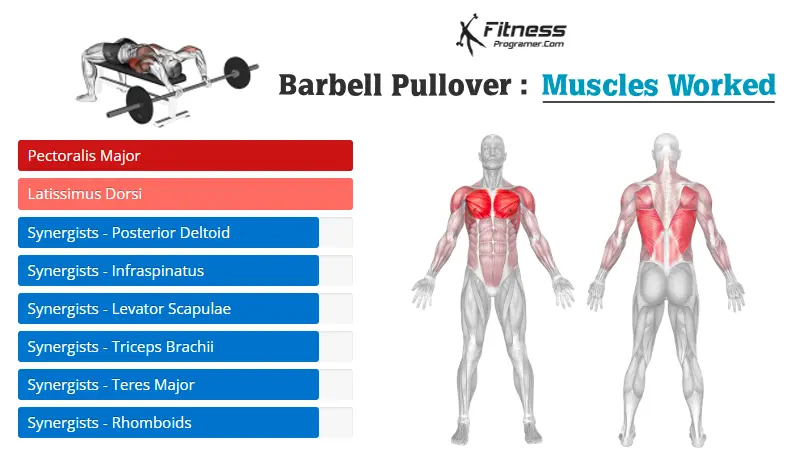Overview
The barbell pullover is a strength training exercise performed lying on a bench, where a barbell is lowered in an arc behind the head and then brought back to above the chest. Often overshadowed by dumbbell variations, the barbell version allows for heavier loading and offers a distinct challenge in maintaining shoulder stability and thoracic extension throughout the lift.
How to Perform the Barbell Pullover

Lie on a flat bench, holding the barbell over your chest with a slight bend in your elbows.
Inhale deeply, brace your core, and lower the barbell in an arc behind your head, keeping arms mostly straight.
Lower until you feel a deep stretch in your lats and chest—avoid going too far if shoulder mobility is limited.
Exhale and pull the barbell back over your chest using your chest and lats.
Control the movement throughout, especially when returning to the starting position.
Repeat for the desired number of reps.
Tips for Proper Form
Use a moderate grip width for balanced chest and lat engagement.
Keep elbows slightly bent, not locked or flaring outward.
Maintain thoracic extension (upper back slightly arched).
Control the eccentric phase for maximal stretch and safety.
Stop the descent if shoulder discomfort arises—never force range of motion.
Common Mistakes to Avoid
Overarching the lower back, placing stress on the lumbar spine.
Letting the bar drop too low behind the head, risking shoulder strain.
Using momentum instead of controlled motion.
Locking the elbows, which shifts load onto the triceps and elbow joint.
Neglecting breath control, reducing core stability and tension.
Benefits of the Barbell Pullover
Simultaneous Chest and Back Engagement: Activates pectorals and lats together.
Thoracic Mobility: Improves upper-back extension and shoulder mobility.
Deep Stretch for Muscle Growth: Loaded stretch may promote hypertrophy.
Efficient Use of Equipment: Works multiple upper-body muscles in a single movement.
Great Alternative to Dumbbell Pullovers: Allows more weight with a fixed grip.
How to Incorporate Into Your Routine
This movement can be used as a hypertrophy finisher, warm-up stretch, or compound assistance lift depending on goal and load.
For Beginners: 2–3 sets of 10–12 reps with a light barbell or EZ bar to learn control and mobility.
For Hypertrophy: 3–4 sets of 8–12 reps with moderate tempo and stretch emphasis.
For Functional Training: Include in mobility circuits with pull-ups, push-ups, and hanging scapular retractions.
For Circuit Training: Pair with dips or incline presses for chest focus or with rows for posterior chain synergy.
For General Fitness: Add once weekly to support shoulder health, posture, and upper-body variety.
Barbell Pullover Muscles Worked

Frequently Asked Questions
Does the barbell pullover target chest or back more?
A study evaluating EMG activity during barbell pullovers concluded that the pectoralis major showed significantly higher activation than the latissimus dorsi during both the eccentric and concentric phases. This supports the barbell pullover as a chest-dominant movement when performed with standard technique.
Is barbell pullover better than dumbbell pullover?
The barbell allows heavier loading and bilateral control, while the dumbbell version allows a greater range of motion and unilateral focus. Both have value depending on training goals.
Is it safe for people with shoulder issues?
Not always. Those with limited shoulder mobility or rotator cuff issues should start with light weight or opt for safer alternatives like cable pullovers or floor-based versions.
Can it expand the rib cage?
While the myth of skeletal expansion is debunked, the movement may improve posture, thoracic extension, and upper-body aesthetics when used consistently.

